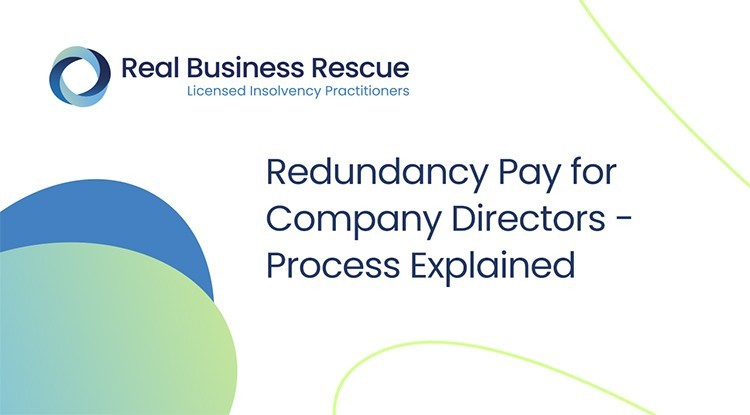Explained: If a Company Goes Bust Who Pays Redundancy in the UK?
Explained: If a Company Goes Bust Who Pays Redundancy in the UK?
Blog Article
Investigating the Interaction Between Business Redundancy and Organizational Versatility for Future Growth
In the dynamic landscape of today's service globe, the detailed relationship between company redundancy and organizational versatility emerges as a critical factor for sustained development and success. Companies commonly deal with the obstacle of striking a fragile balance in between preserving a level of redundancy to alleviate risks and cultivating versatility to react swiftly to the ever-evolving market demands. This delicate interaction holds the crucial to not only making it through in turbulent times but also thriving when faced with uncertainty. As we check out the diverse measurements of this interplay, appealing insights right into exactly how organizations browse these intricacies to lead the means for future development await.
Significance of Business Redundancy
Company redundancy is a critical element that boosts business strength and reduces operational dangers. By including redundancy procedures within the organizational framework, business can better hold up against unforeseen interruptions and changes in the company environment. Redundancy works as a strategic buffer, permitting firms to adapt and react properly to unexpected challenges without compromising vital procedures.
One key aspect of the relevance of business redundancy is its role in making sure connection during times of situation. When confronted with unexpected changes or emergencies, redundant systems, resources, or workers can step in to maintain critical features and prevent prevalent disruptions. This connection not only safeguards the business's credibility and consumer trust however likewise decreases economic losses and functional downtime.

Methods for Organizational Adaptability

One more essential technique is buying modern technology and facilities that can sustain adaptability and scalability. Applying digital devices, automation, and data analytics can streamline procedures, boost effectiveness, and provide beneficial understandings for educated decision-making. In addition, developing versatile organizational frameworks that enable for quick modifications to market dynamics and customer demands is important for staying competitive in a swiftly progressing atmosphere. By proactively small business closing employee rights uk recognizing possible disruptions and possibilities, organizations can proactively adjust and thrive in an ever-changing organization landscape.
Balancing Redundancy and Versatility
Accomplishing an unified equilibrium between functional redundancy and organizational adaptability is critical in browsing the complexities of a dynamic company atmosphere. Striking the appropriate balance between redundancy and flexibility is a delicate procedure that requires a deep understanding of the organization's objectives, market characteristics, and threat tolerance.
To accomplish this equilibrium, companies require to perform routine assessments of their operations to identify areas where redundancy is necessary for threat mitigation and where flexibility can drive innovation and development. Implementing flexible frameworks, fostering a culture of constant knowing and renovation, and motivating open communication across all degrees of the organization are vital approaches to integrate redundancy and flexibility efficiently. By lining up these 2 essential elements, companies can place themselves for lasting growth and success in an ever-changing business landscape.
Study on Adjustment Success
In analyzing instances of effective organizational adjustment, it becomes evident that the interaction in between operational redundancy and adaptability is a specifying element in forming resilient businesses. A DVD rental service, Netflix demonstrated remarkable versatility by transitioning into a streaming system when digitalization interrupted the market. These case researches underscore the importance of operational redundancy paired with organizational versatility in cultivating long-lasting development and competition.
Structure Strength for Future Development
Building durability for future growth needs a critical positioning of operational processes with market dynamics and emerging trends. Firms need to adapt to changing environments by cultivating a society of flexibility, technology, and continual enhancement. Durability involves not only recovering from problems yet likewise proactively preparing for future challenges. One vital aspect of building durability is buying durable threat monitoring methods to reduce possible disturbances. This consists of circumstance preparation, branching out supply chains, and creating backup plans for different backups (who pays redundancy money).
Moreover, promoting strong partnerships with stakeholders, such as consumers, staff members, providers, and the community, is crucial for weathering unpredictabilities and preserving trust fund and assistance during stormy times. Effective communication and transparency play an essential role in building resilience, as they aid straighten expectations and help with partnership in browsing uncertainties.
Moreover, organizations require to focus on discovering and advancement campaigns to upskill workers and outfit them with the required tools to adjust to transforming conditions. By investing in their workforce, companies can enhance their adaptability and dexterity, eventually strengthening their strength for sustainable future development.
Verdict

In the vibrant landscape of today's service globe, the intricate connection between firm redundancy and organizational flexibility emerges as a critical variable for continual growth and success. Firms frequently encounter the obstacle of striking a fragile equilibrium between keeping a level of redundancy to mitigate risks and cultivating adaptability to react quickly to the ever-evolving market demands.To accomplish this equilibrium, business require to carry out routine assessments of their operations to determine areas where redundancy is required for threat reduction and where adaptability can drive technology and development.In final thought, the interplay in between company redundancy and organizational adaptability is crucial for future growth. Building resilience via a combination of redundancy and versatility will make sure that firms are prepared for the difficulties of the future.
Report this page